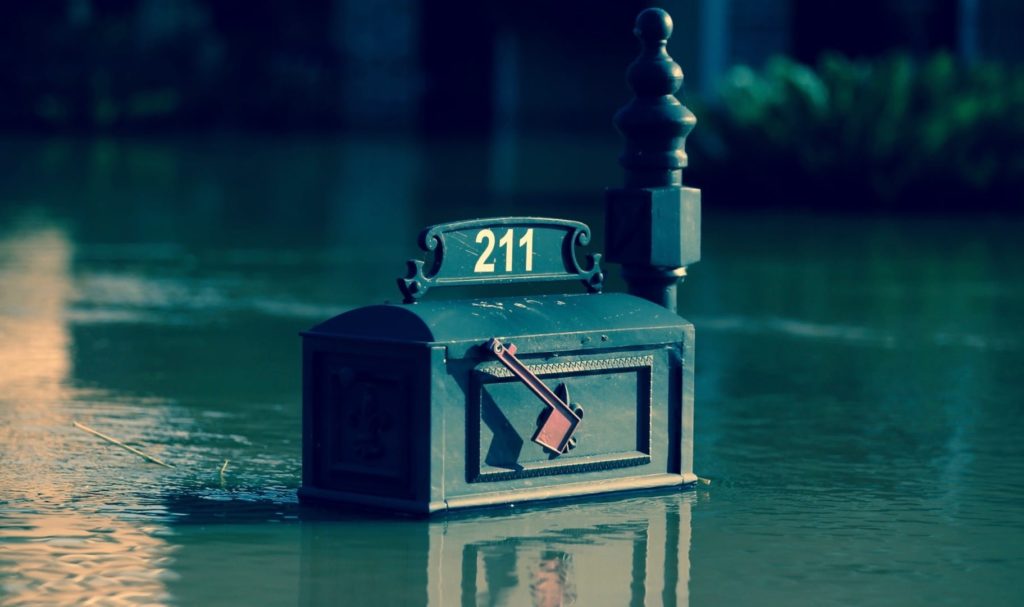
Our province is paying for the white winter that we had through 2016-17. Here we are at the onset of summer and snowmelt floods, compounded by spring rains, continue to hammer the lakes, creeks, rivers, and shorelines all over the British Columbia. For some the impact is nothing more than a visual spectacle, while for others it involves evacuation orders with many returning to find their property in ruins.
Flooding is a very real hazard for BC homeowners. However, much of the concern can be abated with early preparedness. As your guide to homeowner’s insurance, we are here to provide you with viable yet highly effective ways to keep your home and household safe from the impending threat.
4 Tips Towards Keeping Your Home Safe from Flood Hazards
1. Account for Your Flood Risk First
Before you know what reasonable measures you should take, you must confirm the flood level of your property. If this information isn’t available in your documented housing plans, have a look at this BC guide to floodplain maps to locate your community. If the results are concerning, have a property level flood protection survey conducted.
In addition, it is important to know the flood levels of your surrounding region. Also known as the flood stage, it is your gauge at which a body of water surface has risen to a level that may cause significant inundation of common dry land, resulting in an inconvenience or a threat to life and/or property. A breach of the flood level at your local lake, river, stream (etc.) could directly lead to the breach of your property’s own flood level. Knowing this data will help you make sense of local reports which quote updated statistics on the matter. Visit your municipality’s website to get this information, and carefully monitor BC’s Flood Warnings and Advisories which will identify when a flood level near you has been compromised.
2. Raise Above Risk
Once you know the flood level of your home, take measures to elevate high-risk items. This includes wiring, electronics, switches, sockets, and circuit breakers. If your basement’s flood level is one-foot, raise them to two or more. With these harmful home installations out of the way, you can then attend to your possessions and ensure that important documents and valuables are stored above the flood level. One item you can leave in harm’s way, is a sump pump, which will remove water that has accumulated in your basement and divert it into a basin. This worthwhile investment can be found at your local home and garden retailer.
Also take note to elevate potentially harmful items located at the exterior (or in the garage) of your property. Any scenario that can cause rushing flood water to spark a fire or hurl debris at your home is a risk. Backup generators, A/C units, fuel reserves, and even patio furniture should be either anchored (non-electrical) or raised (electrical or fuel-based).
3. Flood-Conscious Landscaping
Retro-fitting your home for floods would be one of the most effective measures you can take. However, this option is not practical for most. Instead, you can use the landscape surrounding your property to abate the threat of floods. It is impactful yet budget-friendly, when compared to retro-fitting.
Swales are one solution. A swale is a trench-like depression that can be excavated around your home near the flood line so that it redirects water away from your property. Grading is also a very important answer to flood woes. Proper grading will channel water away from your home. You need to build up the amount of soil at the foundation of your house so that it forms a downward slant, keeping flood waters at bay. However, before you bring in an expert landscaper be sure to check the guidelines of your municipality because there may be regulations regarding lawn grading in your community.
4. Overland Flood Insurance is a New Thing – Do You Have It?
We bet you didn’t know that prior to the summer of 2016, Canada was the only country in the G8 which did not provide residential flood insurance coverage on a national level. Thankfully this is no longer the case, with comprehensive water damage and overland flood insurance now available in Canada. This will cover you in the event of flooding from lakes, rivers, or streams, and other forms of surface water accumulation. This includes snowmelt coming from mountainous terrains, the key culprit in BC’s current sporadic states of emergency. Without this insurance, coverage for the subsequent damage that can occur is extremely difficult (or impossible) to obtain. Contact Park Insurance today to make sure you’re covered because the province’s flood fatigue continues.